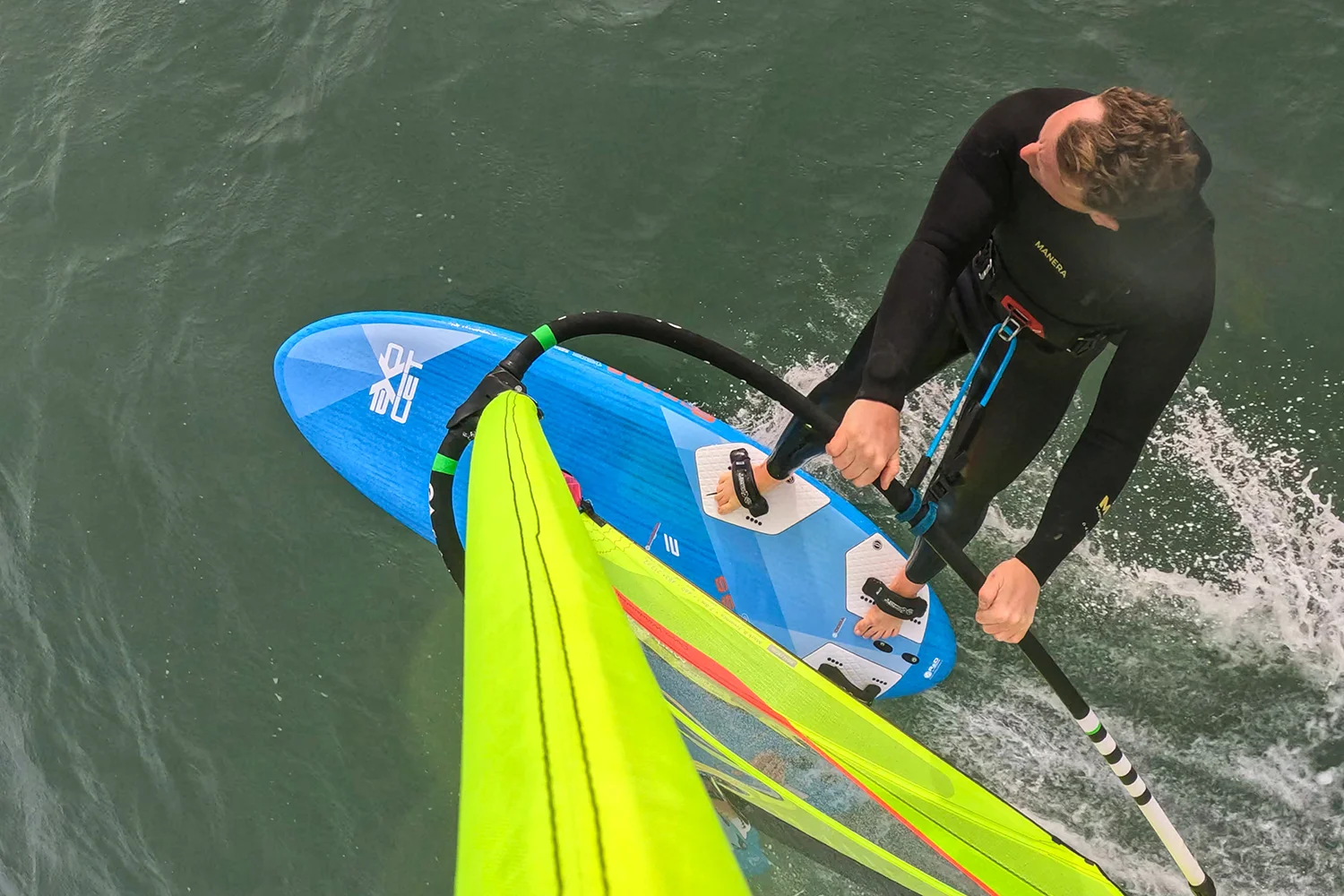
THE VERDICT
The Scross will serve a spectrum of riders who have stability, comfort and ease of use at the top of their must have list. The Scross is easy to use, yet still possesses the ability to deliver a little extra when the rider chooses to do so.
THE LOWDOWN
Noticeably carrying one of the wider outlines on test, the Scross provides a stable platform for the rider, which is easy to use, while promoting early planing. Pleasing shades of blue cover the deck and hull, with a gently brushed carbon finish across the majority of the Scross.
Most of the volume is located just behind the mast track and then fills out into the tail. The Scross offers just the right amount of footstrap options to suit intermediate to advanced sailors – with both inboard and outboard settings, while double density shock absorbers are placed in the heels of all the straps for extra comfort whilst riding. Upfront, the nose maintains some width, but is thinned out, and a clear concave deck is apparent to help maintain control and increase efficiency. Although there is less obvious volume upfront, its width will help carry the rider’s weight through critical tacks or while uphauling.
Rolling the board over a single concave is present right under the nose and there is some progressive nose kick; this quickly blends into a vee double concave as you move towards the mid-section and then into a vee from the straps back to the tail – where uncomplicated cut-outs are placed. The entire bottom shape is looking to provide speedy performance, while maintaining control and ease of use.
The Scross is provided with an MFC fin to complete the package, while it also offers versatility with a foil-ready box for those also looking to venture into the wonderful world of foiling.
The Scross is available in two constructions; AST which has durability and performance in mind, and their carbon construction for ultimate performance and lightweight, which we were provided with for the test.
PERFORMANCE
Immediately stepping onto the Scross, you’ll notice that it feels a little larger than its quoted volume due to its wider outline. Off the plane, the Scross feels stable and very user-friendly, requiring little input from the rider to get it moving in the desired direction. Getting onto the plane is an easy and forgiving affair with the Scross’ wider outline naturally encouraging early planing.
Meanwhile, the footstraps are easy to find, even in their most outboard setting and the Scross will do a lot of the handwork for you, so you can sit back and enjoy the ride. However, with a bit of extra focus and input from the rider, and a slight shuffle of the feet out towards the rail, its performance really jumps to the next level, allowing you to push harder against the fin to eke out even more speed as you put the hammer down.
Capable of handling predictable chop and rolling seas, the Scross shows its real potential in flatter waters. Through transitions, the Scross is forgiving, with its wider outline providing reassuring security while practising less-than-perfect tacks and gybes. Dialling in on the gybe, the Scross responds well to a fully committed entry, while a wider carving radius suits the Scross’ width, which makes it a great candidate for those looking to complete their first gybes or crack their first planing exits with its width helping you to stay on the plane.
The Scross possesses the adaptability to suit a spectrum of freeride windsurfers – from those looking for just pure planing fun, to those who want to start to drive a little harder and faster at their local spot, while still maintaining comfort and usability.
Test Editor: James Hardy
Second Tester: Tris Best
Photos: OTC
Location: Hayling Island, Portland Harbor & Emsworth Harbour
Issue: April #432















